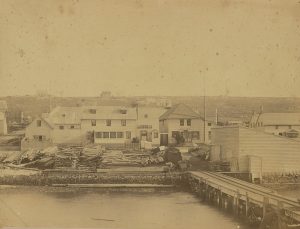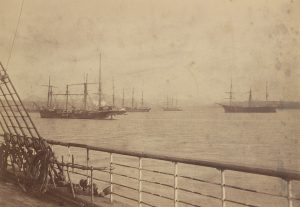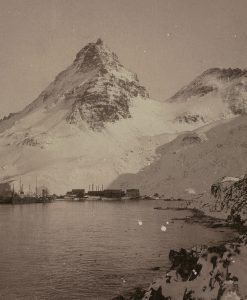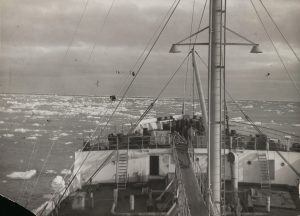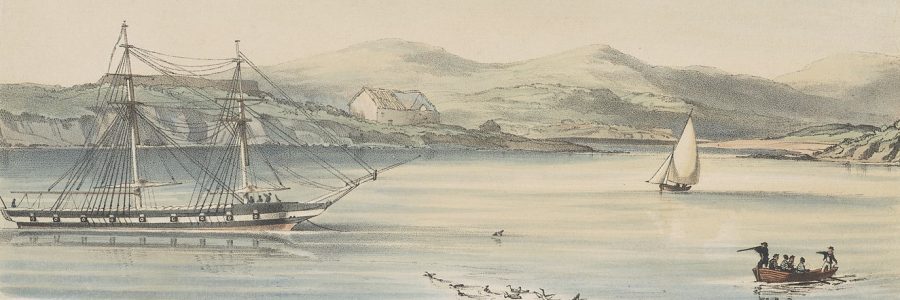
The Falkland Islands and South Georgia
The Royal Commonwealth Society department has just released four collections of photographs, artwork and maps relating to the Falkland Islands and South Georgia on Cambridge Digital Library. We very warmly thank Cliff Webb, a long-term supporter of the RCS and the UL, for making this possible. These sources offer rare insight into the history of two of Britain’s most remote overseas territories.
The largest collection of photographs, RCMS 277/1, comes from the archives of William Markham Dean (1881-1953) grandson of the pioneering Falklands merchant and businessman, John Markham Dean (1815-1903). William Dean was Chairman of the Falkland Islands Company from 1938 to 1952 and wrote a history of the firm. His papers preserve original documents and notes tracing the settlement of the islands by the French, British, Spanish and Argentinians from the late eighteenth century, and the foundation of the British Crown Colony in 1840. In 1842 the Colonial Office moved the capital from Port Louis, seen in the featured image above, to the more sheltered Port Jackson (renamed Stanley Harbour), as it was more accessible to the sea, had plenty of peat for fuel and a good supply of fresh water from Moody Brook.
Photographs from the nineteenth century document the importance of the shipping and wool industries to the islands’ economy. They illustrate Stanley’s role as a refuge offering supplies, repair and salvage for vessels mauled by rough seas and violent storms when rounding Cape Horn. There are several images of one of the region’s most famous wrecks, Isambard Brunel’s ‘Great Britain’, completed in 1849. It was the first iron-built, screw-driven vessel to cross the Atlantic. Damaged in a gale off the Horn in 1886, ‘Great Britain’ sought shelter in Port Stanley, and was sold to the FIC for use as a warehouse, before being scuttled in 1937. ‘Great Britain’ remained there until its salvage and triumphant return to Bristol in June 1970, where it is now a major heritage attraction. Other photographs portray the islands’ distinctive topography, botany and wildlife, including the geological mystery of the ‘rock rivers’: long, narrow quartzite rock formations, which flow across the landscape like rivers, possibly the result of volcanic or glacial activity. The launch also includes another very early set of prints, donated in 1905 by W.A. Thompson, Honourary Treasurer to the Falklands (Y30795A).
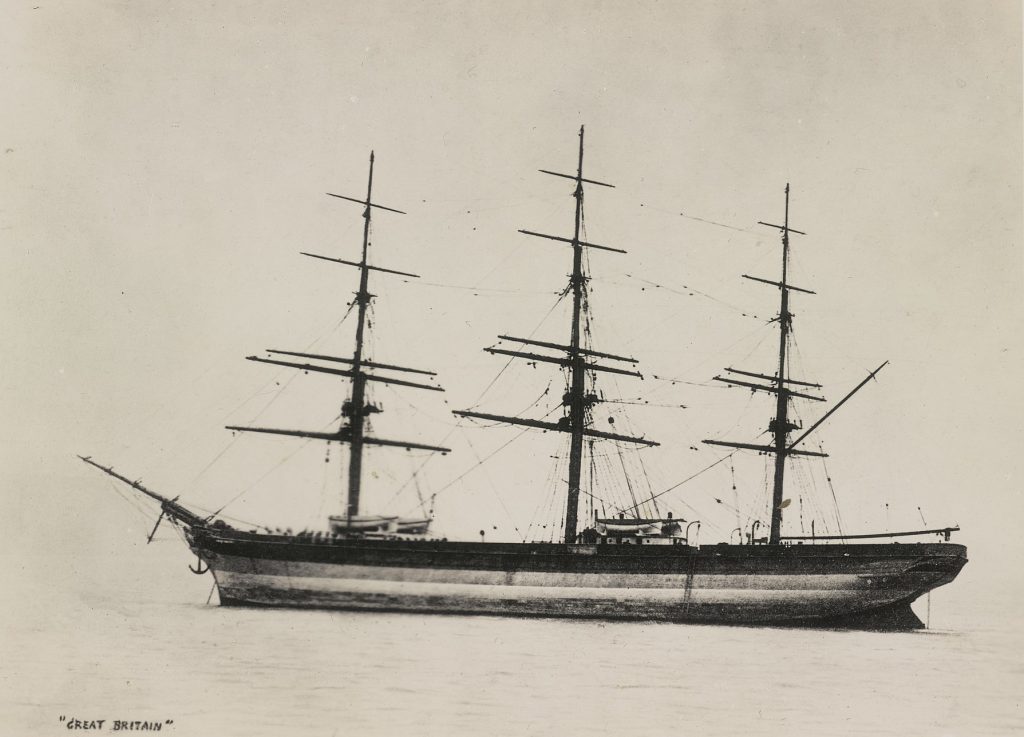
SS Great Britain, RCMS 277_1_80 
Rock river, Y30795A_11 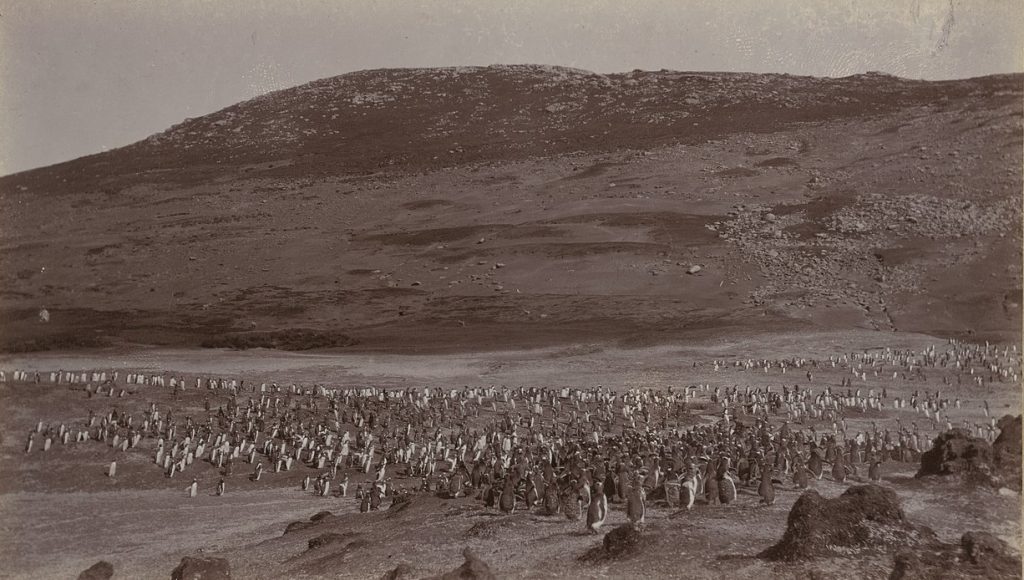
Penguins, RCMS 277_1_59
The island of South Georgia lies about 800 miles east-southeast of the Falklands, and together with the South Sandwich Islands, forms Britain’s least populated overseas territory. It was claimed by James Cook, who landed there in 1775, and today hosts research stations for the British Antarctic Survey. The RCS photographs, however, illustrate South Georgia’s years as the headquarters of whaling in the South Atlantic. In 1904, the Norwegian C. A. Larsen, a veteran of whaling in Arctic waters, founded the first station at Grytviken. The enterprise proved so profitable, that by 1912, six other stations were also in operation. The original owner of Y30795B, Hester McGivering, worked for Christian Salvesen Limited, which established its base at Leith Harbour in 1909. These photographs likely date from the 1920s. A smaller collection documents whaling at the South Shetland Islands, then a dependency of the Falklands, Y30795C.
Initially whaling at South Georgia was shore-based, but with the decline of the local whale population, the use of factory ships (pelagic whaling) developed from the 1920s, allowing whales to be hunted across the southern seas, and the island functioned as a base for repair, maintenance and storage. Initially whales were caught with harpoons thrown from small boats until the Norwegian, Sven Foyn, invented the explosive harpoon gun during the 1850s. Whales were harpooned with an explosive grenade, inflated to keep them from sinking and marked for retrieval by small boats known as catchers, which towed them to a factory ship or shore station for processing. The whale was hauled to the flensing plan, and its blubber removed and boiled under pressure to extract the oil. Baleen whale oil was used in a number of food, pharmaceutical, cosmetic and chemical products, providing a much better lubricant than mineral oil, and contained glycerol which was essential for explosives. Meat and bone were divided, also boiled, and ground to make stock food and fertilizer. Whaling in such a harsh climate was gruelling, dangerous work. Virtually every aspect of the catching and processing of whales is illustrated in the photographs. The scale of the whaling industry was staggering: approximately 175,000 whales were processed at South Georgia from 1904 to 1965, and as many as 1.4 million whales were caught in the southern region between 1904 and 1978, when hunting of the larger animals ceased.
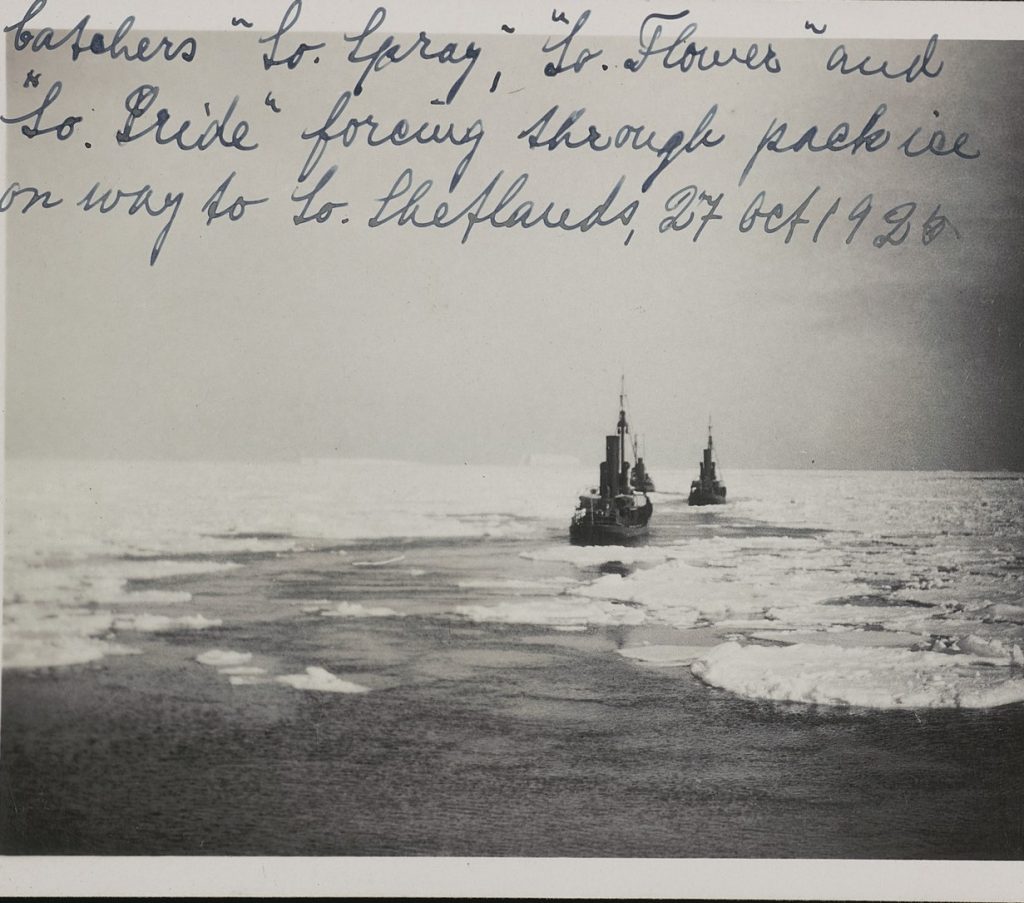
Chasers in pack ice, Y30795B_7 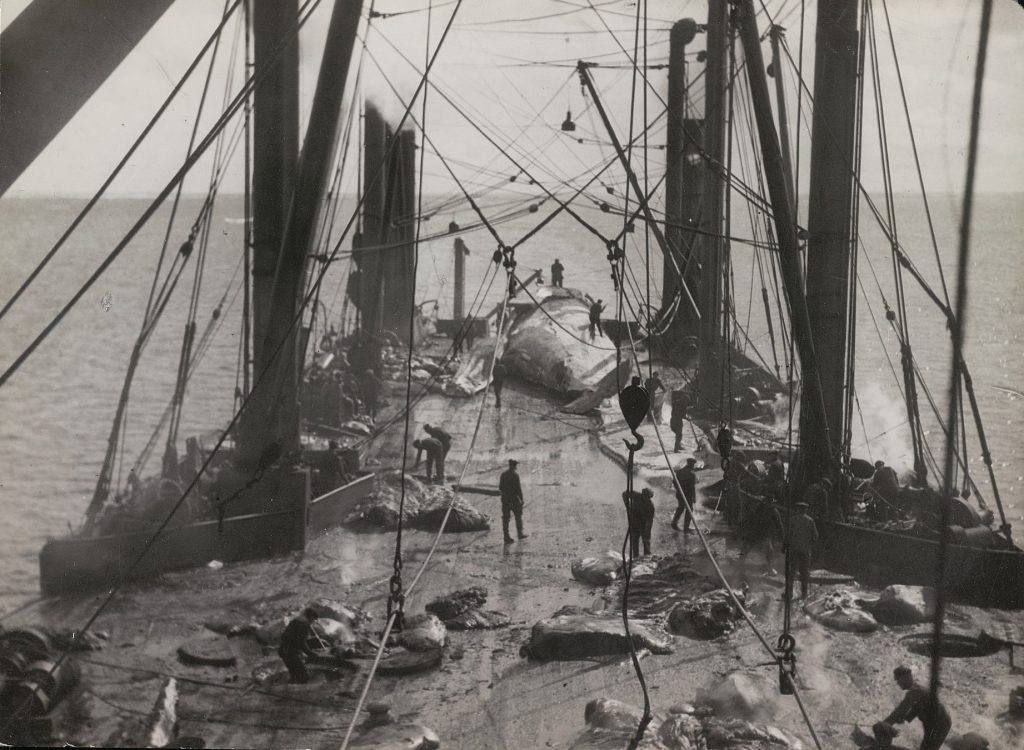
Hauling whale aboard, Y30795B_3 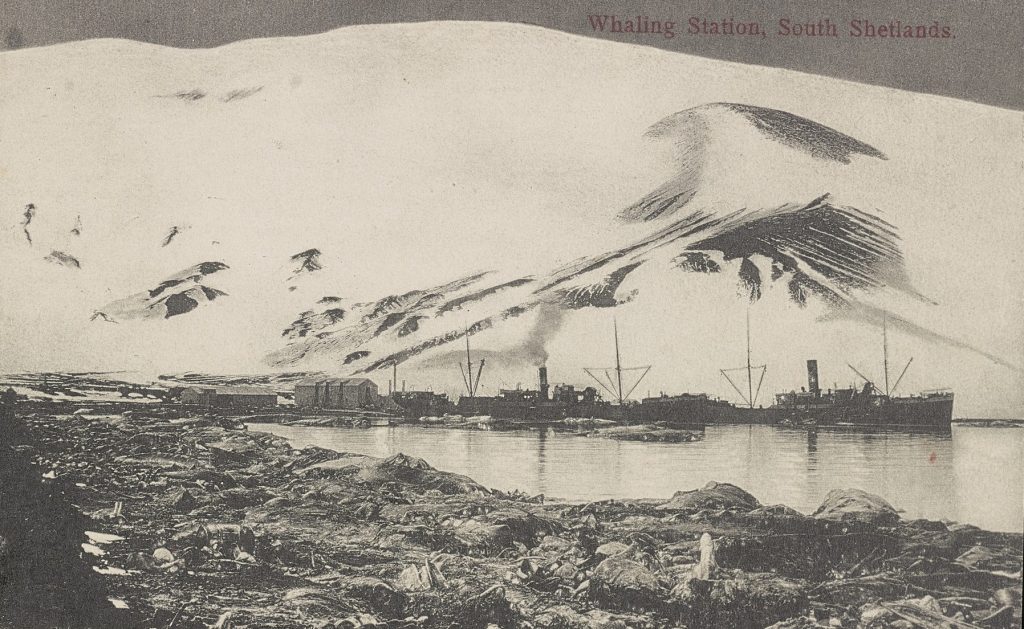
South Shetlands, Y30795C_2


